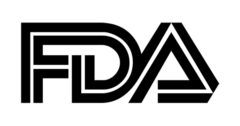
FDA announced that it’s looking to industry to identify new sterilization methods and technologies, in response to recent news of supplier facility closures. The two public challenges will seek alternative processes to decrease the use of ethylene oxide.
About half of all sterilized medical devices in the U.S. undergo sterilization using ethylene oxide, according to FDA. Earlier this year, FDA learned that the Illinois Environmental Protection Agency issued an order to stop Sterigenics from sterilizing medical and other products with ethylene oxide gas at their Willowbrook, Illinois location due to the presence of higher-than-acceptable levels of ethylene oxide in the air around the facility. Further, Viant recently made public that their Grand Rapids, Michigan ethylene oxide sterilization facility is scheduled to close later this year after receiving attention from the state for air quality issues.
In its response to the closures, FDA is exploring ways to validate new sterilization agents or processes that don’t come with the same environmental risks while still enabling safe, effective sterilization (and mitigating the effects of product shortages).
Enter FDA’s challenge.
FDA’s Request to Industry
From July 15, 2019 through October 15, 2019, FDA is encouraging ideas from stakeholders, academics, industry and others about new or alternative sterilization process solutions, such as new devices or modalities. Proposed approaches need to be scalable for substantial volumes of devices and compatible with a large cross-section of materials used to manufacture or fabricate medical devices (as well as packaging materials or sterile barriers).
The judging period will run from October 16, 2019 through November 16, 2019. Selected applications will be announced in December.
As well as angles of compatibility and scalability, challenge submissions should describe the anticipated benefit of the technology or method and its impact on public health (vs. other available alternatives). FDA will also consider factors such as feasibility of the strategy or technology and the impact of FDA’s involvement. Visit FDA.gov to review application format requirements.
A second challenge will focus on reducing ethylene oxide emissions.
FDA will hold an advisory committee meeting in November to discuss how best to advance innovations in device sterilization.
Finding Alternative Options
We wrote on validation of novel and non-traditional sterilization processes in 2014, noting that device companies may need to adopt new methods based on the evolution of new materials such as certain polymers. FDA’s draft guidance called out non-traditional processes, like hydrogen peroxide gas plasma and ozone, and novel non-traditional categories, including ethylene oxide in a bag, high-intensity light or pulsed light and microwave radiation, among others.
The author of that article, Robert Packard of Medical Device Academy, outlined the steps to validate sterilization processes, saying, “The technology is constantly evolving, but standards and regulations have matured to the point at which companies can confidently pursue product submissions using these novel sterilization methods. …If your design team is considering this type of sterilization validation, make sure that the design plan is updated to reflect a longer sterilization validation process than traditional methods, and that the plan includes details of the major tasks in the process and specialized resources that will be required.”
Companies that have validated new sterilization processes may find an opportunity to promote their work through FDA’s challenges. Those companies that have yet to look beyond traditional sterilization methods should follow FDA’s dialogue with industry in order to consider alternative approaches.
JAV
Julie A. Vetalice is ORTHOWORLD's Editorial Assistant. She has covered the orthopedic industry for over 20 years, having joined the company in 1999.




